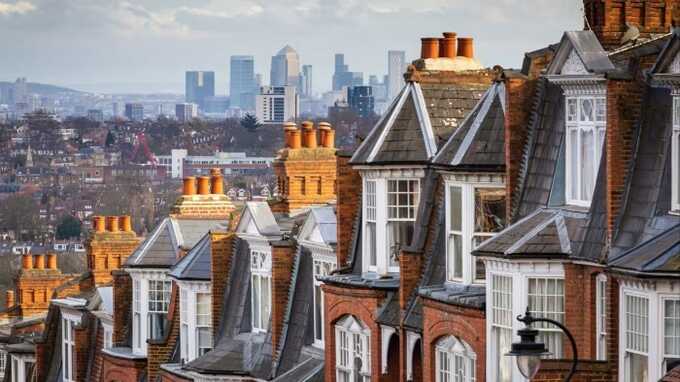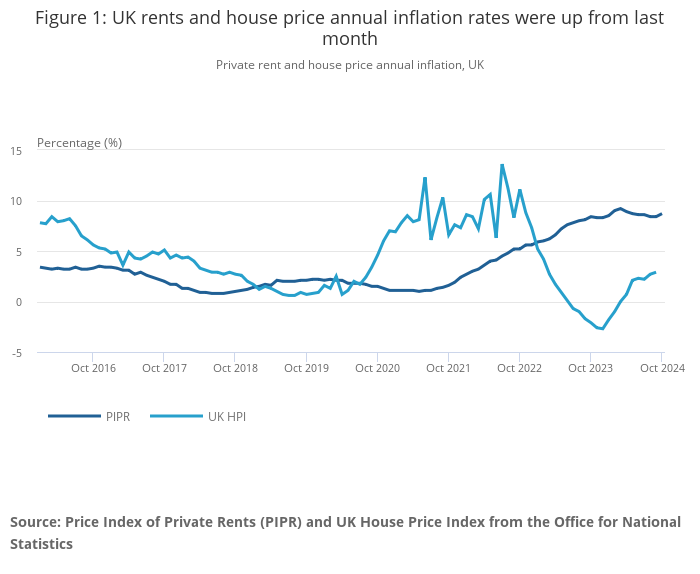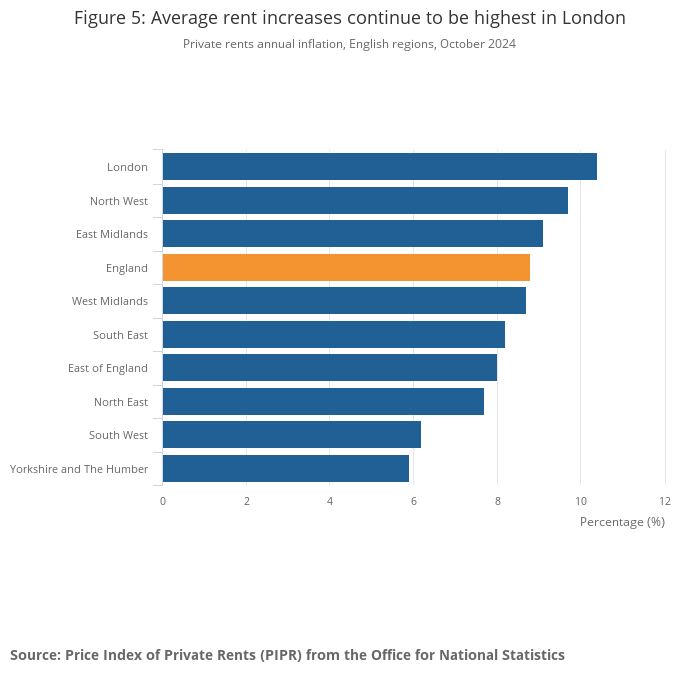London rents rise again as Savills warns of double-digit increase across the UK

Analysts have warned rents are being pushed to unsustainable levels amid another yearly jump and concerns there is no natural plateau in sight.
The average UK private rent rose by 8.7 per cent in the year to October, up from 8.4 per cent in the year to September, according to the ONS.
The increase was most stark in London, with rents up 10.4 per cent year on year.
This annual rise was higher than in the 12 months to September 2024, of 9.8 per cent, but below the record-high annual rise of 11.2 per cent in March 2024.
Wages in the UK only grew 4.9 per cent in the year to October. Data from Savills found that renters spend, on average, two fifths of their income on rents, and warned of an “affordability ceiling”.

ONS head of housing market indices Aimee North said “rental prices increased in the year to October, but still remain below March’s record high annual growth.”
London once again had the strongest annual growth, with the lowest increase in Yorkshire and the Humber.”
The Joseph Rowntree Foundation warned that in London, “these figures are a painful reminder that many families are fighting against a storm of rising costs to keep a safe and secure roof over their head and making the awful choice between heating and eating” in a Bluesky post.
The foundation added it was the 15th consecutive month that annual rent price inflation has been above eight per cent.
However, higher prices haven’t stopped renters looking: “As we continue to see a further increase in rental prices across the UK, our members continue to emphasise key concerns regarding the ongoing trend of lack of rental stock versus an ever-growing number of tenants looking for homes,” Nathan Emerson, chief executive at Propertymark, said.

The concern is that rising rents will continue to squeeze incomes and push home ownership increasingly out of reach for those who cannot rely on aid from external sources, further increasing the gap between renters and buyers.
Two in five current renters believe they will still be renting in retirement, according to research from the Equity Release Council.
Chief executive of the Equity Release Council Jim Boyd warned that the cost of renting risks “placing extra pressure on retirees’ pension savings” as well as the Government’s housing welfare budget.
Savills warn of double-digit rent increase by 2029
New data from Savills has found rental growth will continue to outstrip income growth over the next five years, with rents expected to rise 18 per cent in the UK and 14.2 per cent in the capital.
The property specialist expected low supply of rental stock and dampened demand from buy-to-let landlords to continue to drive rental growth.
We expect to see more landlords exit the market, further eroding supply, and affordability will once again take a backseat
“This would mean that rental growth could be stronger than we have currently forecast,” Guy Whittaker, research analyst at Savills, said.
Buy-to-let has become an increasingly low-margin venture due to rising mortgages, and landlords face further incentives to leave the sector amidst the increase to the stamp duty surcharge on second homes.
“It is challenging to see where an increase in rental supply will come from in the next couple of years. The increase to the existing Stamp Duty Land Tax surcharge for second homes will likely dampen demand from new buy-to-let investors, and it will prevent some existing landlords from expanding their portfolios.
“The potential requirement to upgrade EPC ratings by 2030 may see some leave the sector altogether, particularly in markets where the upgrades required would exceed an entire year’s rental income. In those cases, it may make more financial sense to sell,” Whittaker added.
Rightmove has warned that there are 2.9 million houses that will require a cumulative £23.4bn in improvements to meet the government’s energy performance certificate (EPC) standards by 2030.
ONS head of housing market indices Aimee North said: “Annual house price growth rose again this month, with annual rises across every nation and region, apart from London.”
Read more similar news:
Comments:
comments powered by Disqus

































